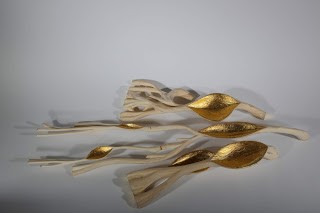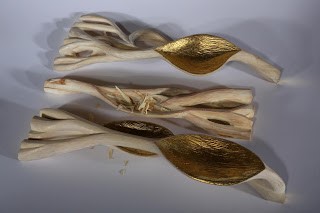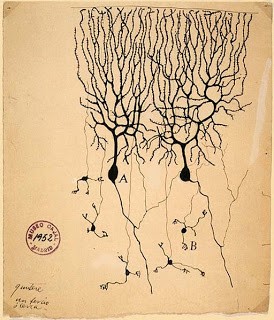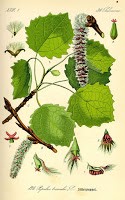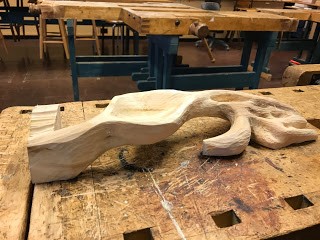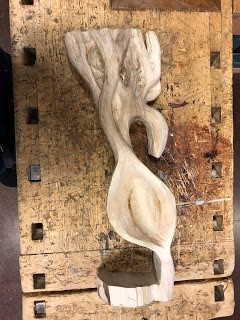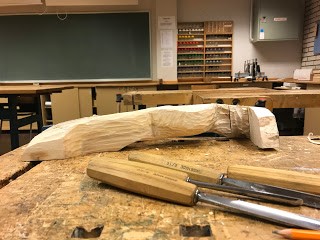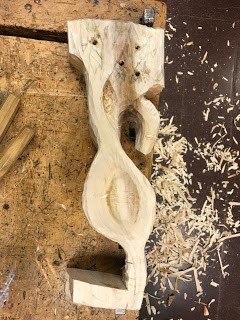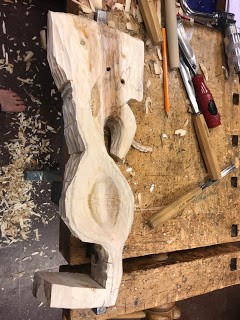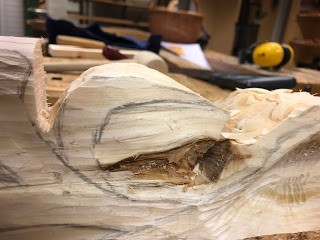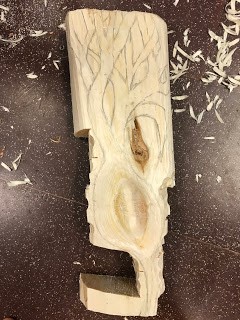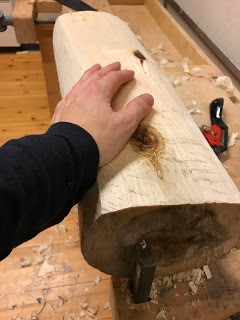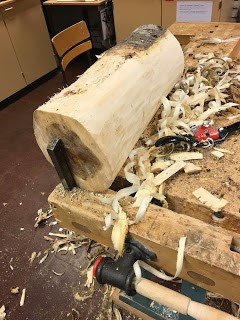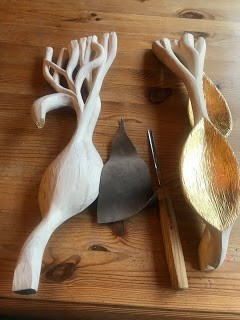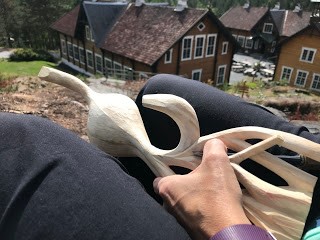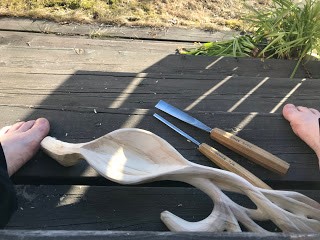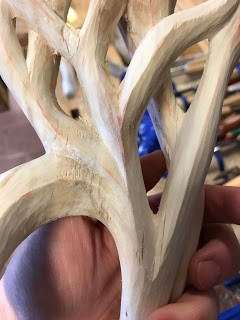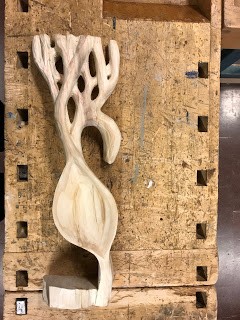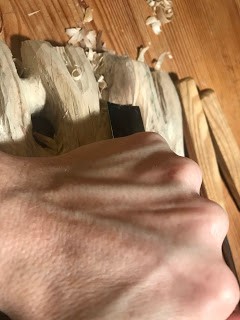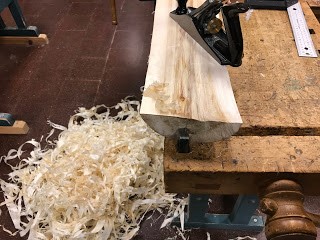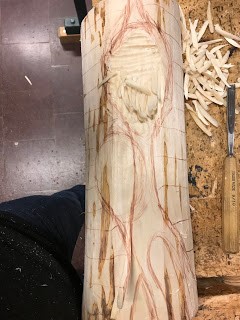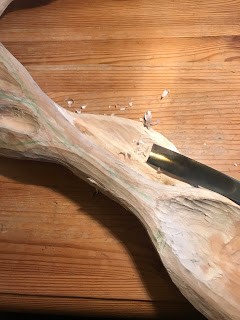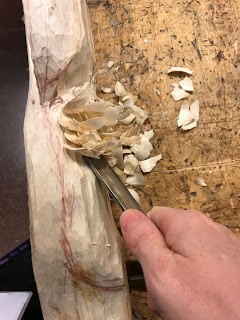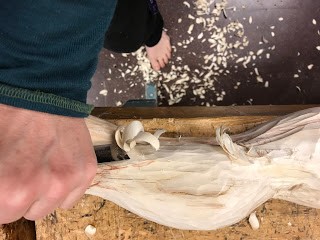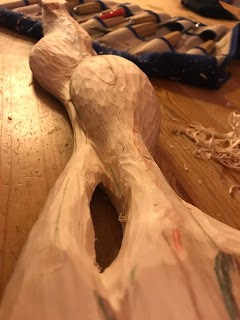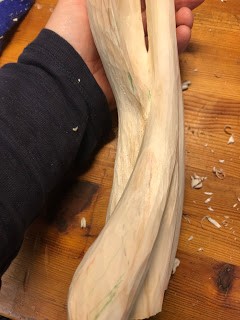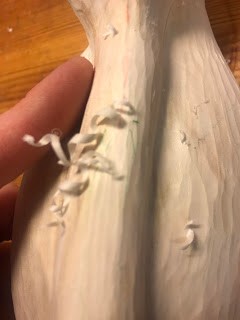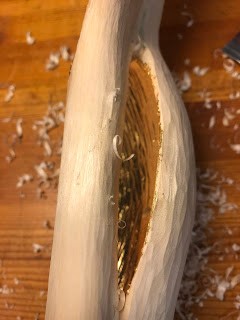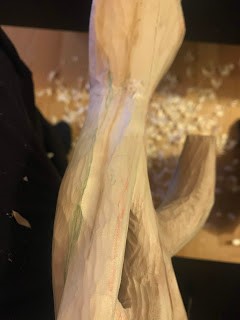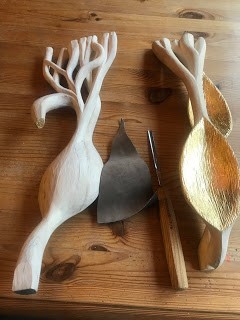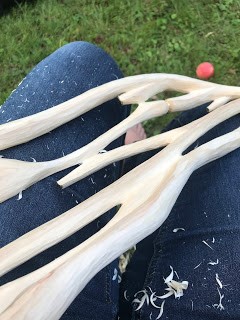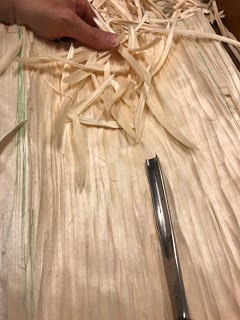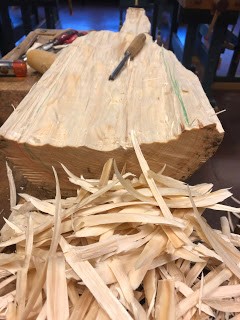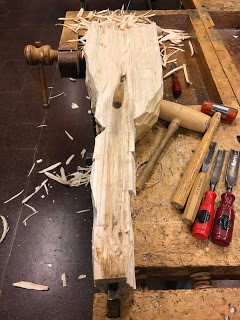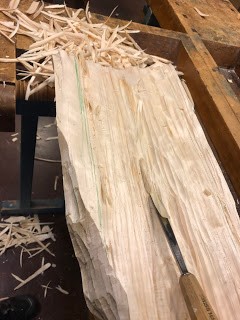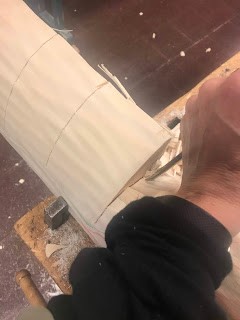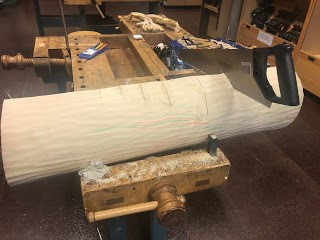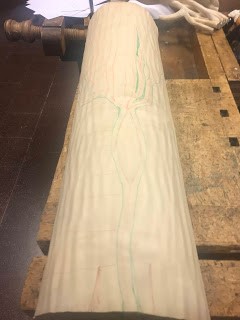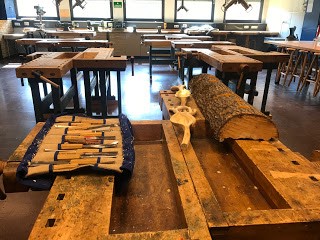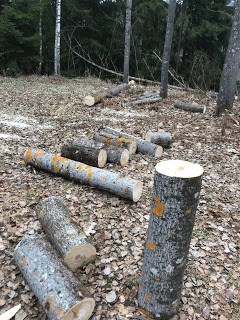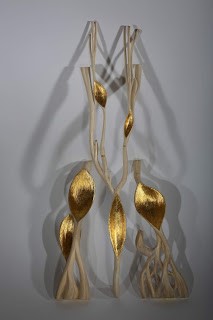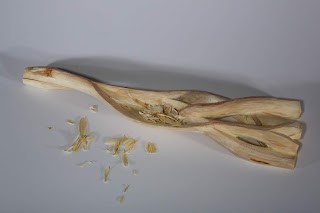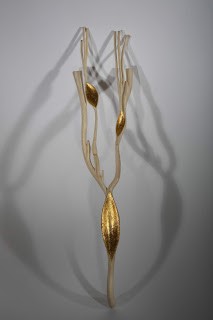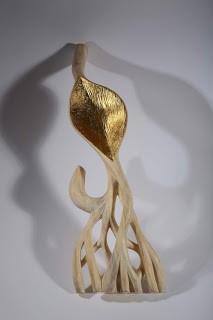Made by Marte Sørebø Gulliksen, Professor in Culture education and aesthetic practice, University of Southeastern Norway, Department of visual and performing arts education.
The Purkinje Series is a series of bowls made by Gulliksen in the period 2015 (Purkinje #1) to 2018 (Purkinje #2-5). The material is aspen wood, harvested from trees felled at her family’s small farm Guvihaug in Sauherad, Telemark, Norway. The bowls are carved in Notodden and Oslo, Norway. From timber to finished bowl, only hand tools are used.
The bowls has a cut finish. They are sealed with sanding sealer and white pigmented wax. The bowls themselves are decorated with metal leafs. This presentation features four bowls:
Purkinje #2: 46cm x 17cm x 6cm
Purkinje #3: 44cm x 12cm x 6cm
Purkinje #4: 88cm x 19cm x 7cm
Purkinje #5: 38cm x 11cm x 5cm
Scroll down for more images. IPR belongs to Marte S. Gulliksen.
Carving and visualizing three-dimensional form
Visualizing three-dimensional form and rotate it mentally, is a core skill for carving in wood. It is tightly connected to prior sensory experience with physical objects, memory and ideation. It is an important skill in abstract thinking, like mathematics and physics, as well as a basic skill necessary in humans’ everyday interaction and experience. In the period Gulliksen worked with these bowls (#2-#5), she temporarily lost that ability due to a growing tumor in the brain. After surgery, she regained the ability again. This experience of losing a core mental ability is useful for experiencing underlying limitations in how three-dimensional forms are understood and visualized. The knowledge thus gained could be useful for learning sciences, and the practice of teaching in schools. A future article exploring this case in an educational context is planned, following the theoretical foundation mapped out in the article Making Matters? Read more about the article at the blog «Estetiske fag Universitetet i Sørøst-Norge»
Purkinje cells in the Cerebellum
The shape of the bowls are inspired by a certain type of nerve cells, the Purkinje cells. These cells exist in the Cerebellum, known by their intricate dendritic arbor. Gulliksen has taken artistic liberty with the arbor as well as allowing the dendrites to spread out in three dimensions, crossing each other, over and under. This allowed for exploring three-dimensional forms, the aspen woods limitations, and her own wood carving skills.
On Purkinje cells in Purves et.al. 2012, p.425:
«The Purkinje cells present the most striking histological feature of the cerebellum. Elaborate dendrites extend into the molecular layer from a single subjacent layer of these giant nerve cell bodies (called the Purkinje layer; Figure 19.8B) Once in the molecular layer the Purkinje cell dendrites branch extensively in a plane at right angles to the trajectory of the parallel fibers (Figure 19.9A), and each parallel fiber can contact a very large number of Purkinje cells (on the order of tens of thousands). The Purkinje cells also receive a direct modulatory input on their dendritic shafts form the climbing fibers, all of which arise in the inferior olive. […]”
“The Purkinje cells project in turn to the deep cerebellar nuclei. They are the only output cells of the cerebellar cortex.”
Purkinje cell illustration retreived from http://bridgeblog.scientopia.org/wp-content/uploads/sites/34/2011/09/512px-PurkinjeCell.jpg 28.11.2018
Aspen wood
Aspen, Populus tremula, is a three in the poplar family, often referred to as quaking aspen for the sound it makes in slight breezes. It is known by its white, even wood, that can glimmer like mother of pearl when it is cut with sharp tools. When the aspen tree grows, it brings nutrients from the soil up through the fibers, and sand can be found up in the three crown. The white wood is sometimes stained brown or grey by this process. The sand and nutrients in the wood makes the tools dull, and demands that they are sharpened often. As green wood, aspen is relatively soft to carve.
Purkinje #2: 46cm x 17cm x 6cm
Purkinje #3: 44cm x 12cm x 6cm
Purkinje #4: 88cm x 19cm x 7cm
Studio photos of Gulliksen’s Purkinje series.
(Photograph: Marek Podowski)

